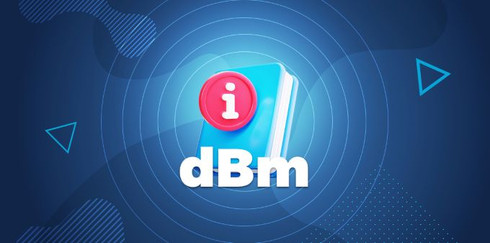What Is dBm, and Why Does It Matter for Cell Phone Boosters
dBm Explained: The Number Behind Every Strong Signal
When researching cell phone boosters, you'll often come across the term "dBm". This small abbreviation packs a big punch, as it determines how strong your signal really is. Knowing what it means can help you choose the right booster, install it in the best spot, and get the most out of your equipment.
Take advantage of our system design and installation services. Learn more or call us for a free consultation: 1-800-969-8189.
First, What Is dB?
Before we can understand dBm, we need to talk about dB. Short for decibel, dB measures changes in power. In this case, it measures how much a signal increases or decreases in strength.
Instead of expressing those changes as large numbers, engineers use a logarithmic scale that makes it easier to compare signal levels. In simple terms:
- A positive dB value means gain (the signal is getting stronger).
- A negative dB value means loss (the signal is getting weaker).
For example, if an amplifier adds +10 dB of gain, it's making the signal ten times stronger. Likewise, if a long cable causes –10 dB of loss, the signal power is reduced to one-tenth of what it was.
You'll see dB used throughout cell booster specs to describe how much power is gained or lost through each component, like the antennas, cables, splitters, and amplifiers.
Next, let's see how dBm builds on this concept.
What is dBm?
Now that we know dB measures change, let's look at dBm, which measures actual power.
dBm stands for decibel milliwatts. It expresses an absolute measurement of signal power relative to one milliwatt (mW). Because it's based on a logarithmic dB scale, even a small change in dBm can mean a big change in power.
For example:
- 0 dBm = 1 mW of power
- 10 dBm = 10 mW of power
- 20 dBm = 100 mW of power
Every 3 dBm increase doubles the signal power, while every 3 dBm decrease cuts it in half.
In cell signal terms, dBm tells you two important things:
- How strong your current signal is (for example, your phone reading -90 dBm).
- How much power your booster can output through its uplink (to the tower) and downlink (to your devices).
dBm and Cell Phone Signal Strength
When it comes to cell service, the bars on your phone don't tell the full story. Every phone brand and carrier uses its own scale for bars, so one person's "three bars" could be another's "two." The most accurate way to measure your cell signal is by looking at its dBm reading.
Cell signal strength is measured in negative dBm values, and usually ranges from -50 dBm (strong signal) to -120 dBm (weak to no signal).
Here's a quick breakdown:
- -50 to -70 dBm: Excellent to good signal (strong connection)
- -71 to -85 dBm: Fair signal (usually reliable)
- -86 to -100 dBm: Weak signal (calls or data may drop)
- Below -100 dBm: Very weak or no usable signal
When installing a cell phone booster, one of the most important steps is finding the area around your home or building with the strongest outdoor signal. That's where you'll place the outdoor (donor) antenna for best performance.
To see your exact dBm reading, see our detailed guide on how to measure signal strength.
dBm and Cell Phone Signal Boosters
A cell phone signal booster works by increasing your signal's dBm level, turning weak outdoor signal into strong, reliable coverage indoors. It captures the existing signal, amplifies it, and rebroadcasts it inside your home, office, or vehicle.
Even a small change in dBm can make a big difference. Because signal power doubles every 3 dBm, improving your signal from -95 to -92 dBm means you've doubled your signal strength.
Most boosters list their power levels in dBm. You'll often see two key specifications:
- Uplink Power: The strength of the signal your booster sends from your devices back to the cell tower.
- Downlink Power: The strength of the signal your booster sends from the tower to your devices indoors.
Both are measured in dBm and determine how effectively your system communicates with the tower and your phones. The higher the dBm, the farther and more consistently the signal can travel in both directions.
In short, a booster raises your overall dBm level, improving voice quality, data speeds, and coverage throughout your space.
Understanding dBm Means Better Signal Performance
By now, you know that dBm is much more than just a number in a spec sheet. It's the most accurate way to understand your true signal strength.
Here's a quick recap:
- dB measures change in power (gain or loss).
- dBm measures absolute power (signal strength).
- Every 3 dBm increase doubles your signal power.
- The closer to -50 dBm, the stronger your connection.
When you understand what dBm means, you can choose a better cell phone booster, position your antennas more effectively, and get the best performance possible from your setup.
If you're unsure what your signal strength means or which booster best fits your space, you can always contact us at 1-800-470-6777. Our team can help you find the right system based on your current dBm readings, making weak signal a thing of the past.
Interested in Learning More? Check Out Our Cellular Info Hub / WiFi Info Hub





